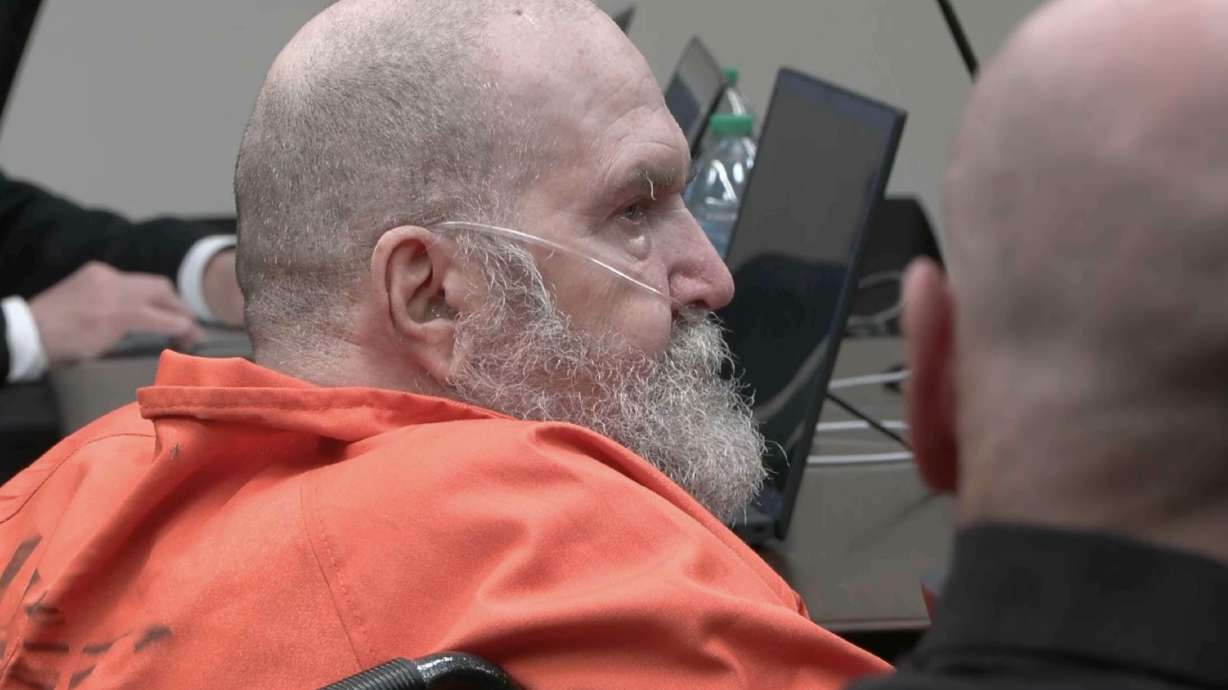SALT LAKE CITY — Death row inmate Ralph Leroy Menzies, whose execution by firing squad was put on hold in August so he could have a new competency hearing, has died of natural causes.
The Utah Department of Corrections issued a statement Wednesday afternoon that Menzies, 67, “passed away from presumed natural causes at a local hospital at 1:45 p.m. today.”
Corrections officials say they made the announcement after Menzies’ next of kin were notified as well as the family of Maurine Hunsaker, the woman he was convicted of kidnapping and brutally murdering in 1986.
Hunsaker’s family released a brief statement, remembering their loved one as “a loving young wife, mother, sister, daughter and friend,” while calling her death “brutal, violent and depraved.” They thanked the Salt Lake County District Attorney’s Office and the Utah Attorney General’s Office “for their decades-long pursuit of justice.”
“The family requests privacy at this time as they mourn and reflect on Maurine’s life.”
“Maurine Hunsaker was a cherished wife and mother whose life was stolen in an act of horrific violence by Ralph Menzies,” Utah Attorney General Derek Brown said in a statement. “For decades, the state of Utah has pursued justice on her behalf. The path has been long and filled with pain, far more than any victim’s family should ever have to endure. Now as Ralph Menzies faces his final judgment, we hope this moment brings a measure of peace and closure to Maurine’s family.”
Menzies’ defense team also issued a statement following their client’s death.
“Ralph Menzies was deeply loved by his family, friends, legal team and by everyone who knew him well. In his later years, he devoted himself to helping others in every way he could. We’re grateful that Ralph passed naturally and maintained his spiritedness and dignity until the end,” his attorneys stated.
Menzies was convicted of capital murder in the 1986 killing of Hunsaker, a 26-year-old mother of three, who Menzies robbed, kidnapped, tethered to a tree near Storm Mountain in Big Cottonwood Canyon and slit her throat. Next February will mark 40 years since Hunsaker was murdered.
Menzies was originally determined to be mentally competent for execution on June 6. But his attorneys claimed their client had “advanced vascular disease resulting in dementia, with severe brain atrophy,” and his condition had declined so much since June that it raised a “substantial” question of his current state.
A commutation hearing for Menzies was held in August before the Utah Board of Pardons and Parole. But after two days of testimony, the board declined to commute Menzies’ sentence to life in prison without the possibility of parole.
The defense team then went before the Utah Supreme Court requesting that their client receive a new competency hearing.
Just one week before his death sentence was to be carried out on Sept. 5, the state’s high court, in a 5-0 decision, ruled that questions about Menzies’ competency should have been given a second look in district court.
The execution was put on hold and experts from both sides were ordered to reexamine Menzies. A new competency hearing was scheduled for Dec. 9.
On Monday, psychologist Dr. Michael P. Brooks submitted his report to Judge Matthew Bates, concluding that Menzies had a diagnosable mental condition, “namely major neurocognitive disorder probably due to vascular disease, with behavioral disturbance” and that he was not competent for execution.
The Key Takeaways for this article were generated with the assistance of large language models and reviewed by our editorial team. The article, itself, is solely human-written.
